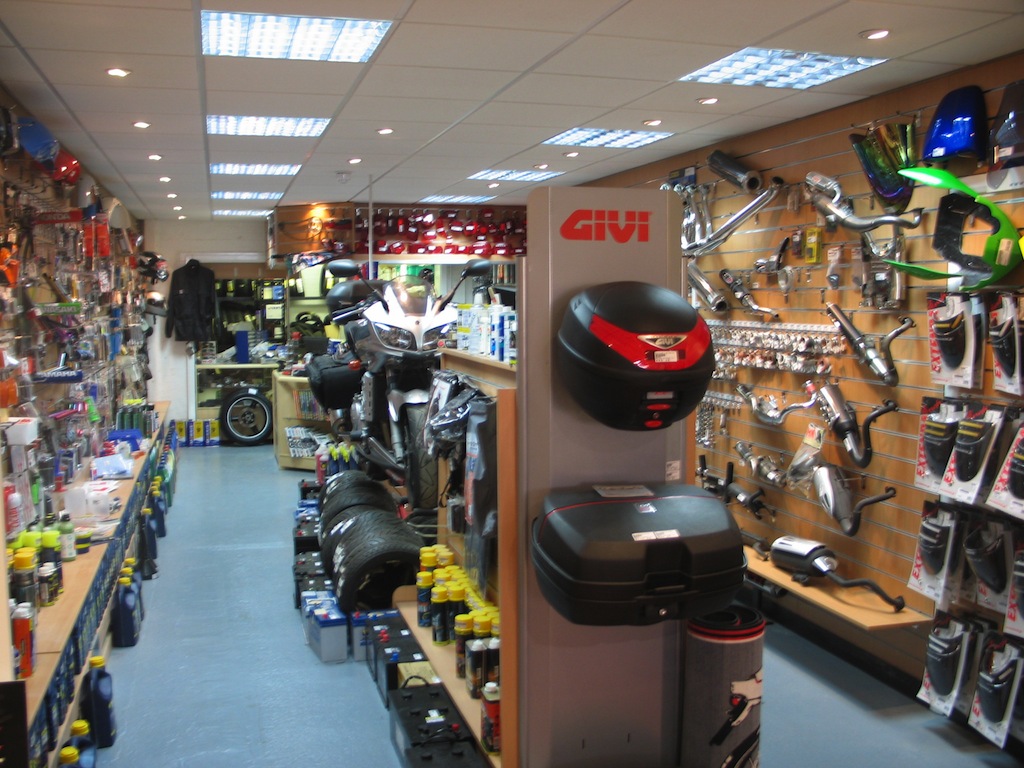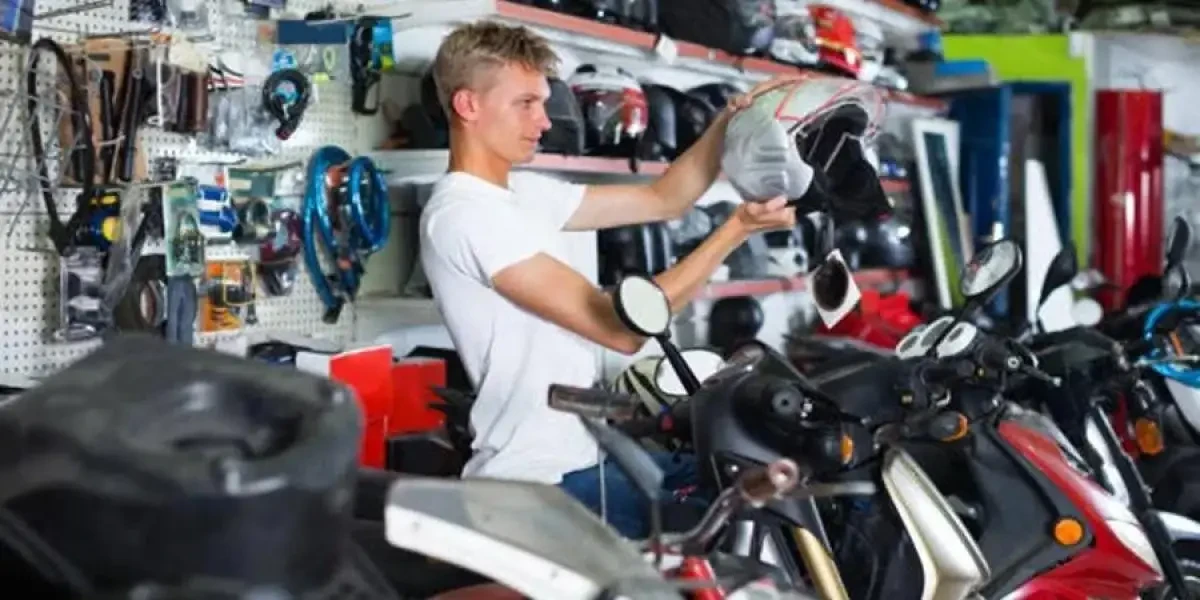Discover the most up to date Motocross Gear NZ for each Degree of Rider
Discover the most up to date Motocross Gear NZ for each Degree of Rider
Blog Article
Comprehending the Important Parts of a Bike: A Comprehensive Guide for Lovers
For motorcycle lovers looking to raise their riding experience and guarantee their bikes run smoothly, recognizing the important parts of a bike is vital. Each component, from the engine's detailed functions to the important duty of the stopping mechanisms, not only influences performance however also safety and security and comfort. This overview will certainly go through the basic parts that every cyclist should recognize with, allowing notified selections in both maintenance and possible upgrades. As we begin this expedition, one must ask: just how does each element interact to create the smooth ride every enthusiast seeks?
Engine Components

The camshaft plays a vital role in regulating the timing of the engine's valves, making certain the accurate opening and closing essential for effective gas and air intake, in addition to exhaust expulsion. This timing is critical to preserving optimum engine performance and efficiency. Furthermore, the carburetor or fuel shot system, depending on the motorbike version, is accountable for blending air with fuel in the correct ratio for burning.
The cooling system, either air or liquid-based, functions to keep the engine's temperature level within operational limits, preventing overheating and making sure durability - motox parts nz. Each element, meticulously designed and integrated, adds to the smooth operation of the engine, defining the bike's power result and total efficiency
Transmission System
Indispensable to the motorcycle's capability, the transmission system guarantees effective power transfer from the engine to the wheels. This system makes up a number of essential components, including the clutch, transmission, and last drive, each playing an essential duty in translating the engine's power right into movement. The clutch, usually run by a hand bar, offers to disengage the engine and engage from the transmission, enabling for smooth equipment modifications and controlled acceleration.
The transmission, commonly referred to as the transmission correct, contains a collection of equipments that motorcyclists can by hand change through to readjust the bike's speed and torque output. These gears are arranged in a sequence that allows the motorbike to speed up efficiently and maintain optimal engine efficiency throughout various rates. Most bikes use a consecutive gearbox, calling for the biker to change gears in an established order.
Braking Systems
While comprehending the transmission system is essential to using a motorbike's power, just as essential is the ability to control and stop that power properly, which is where braking devices enter into play. Brakes are critical for safety and security and performance, supplying the biker with the required control to browse different surfaces and conditions. Commonly, motorcycles feature two kinds of stopping systems: disc brakes and drum brakes.
Disc brakes are more common in contemporary bikes due to their premium efficiency. They include a brake disc, caliper, and pads. When activated, the caliper presses the brake pads versus the rotating disc, converting kinetic energy into warm, thereby reducing the wheel. This system offers much better warm dissipation, constant efficiency, and enhanced quiting power, specifically in damp problems.
On the other hand, drum brakes, though much less typical, are still located in some motorbikes. They function by pushing brake footwear against the inner surface of a drum affixed to the wheel. While usually much less efficient in warmth dissipation and quiting power, drum brakes are easier and more affordable.
Understanding these stopping systems' subtleties allows cyclists to maintain their motorbikes properly find more and appreciate the engineering that ensures safe and effective quiting.
Suspension and Guiding
Suspension and guiding systems are important elements that dramatically influence a bike's handling and adventure comfort. The shock absorber, consisting of forks at the front and shock absorbers at the back, soaks up roadway abnormalities, boosting security and control. Front forks, commonly telescopic or inverted, compress and rebound to moped gloves alleviate influences, while back shock absorbers keep tire call with the roadway, vital for traction and safety.
Steering, centered around the handlebars, links the biker to the motorbike's directional control. The steering head bearings make sure smooth operation, permitting exact ability to move. Appropriate placement and maintenance of these bearings are vital for foreseeable guiding response and reducing cyclist exhaustion.
The suspension's adjustability is another critical aspect; preload, damping, and rebound setups permit personalization to suit numerous riding designs and problems. This adaptability is vital for optimizing performance, whether navigating city streets or dealing with rugged trails. Developments like digital shock absorber supply real-time changes, boosting trip quality across diverse terrains.

Electric Equipments
After ensuring a smooth and regulated trip via efficient suspension and steering systems, focus transforms to the electric systems, a pivotal aspect of modern bikes. These systems play an essential function not only in starting the engine but also in powering various elements that enhance the performance and security of the bike.
At the heart of a motorbike's electric system is the battery, which stores electrical power essential for beginning the engine and powering auxiliary systems - mx gear nz. The generator or generator, combined with the rectifier-regulator, makes certain the battery stays charged while the motorcycle functions, converting power right into electrical energy and keeping voltage levels
The ignition system, one more important part, is accountable for stiring up the air-fuel combination in the engine's cylinders. Modern motorbikes frequently utilize a digital ignition system, supplying higher performance and integrity contrasted to typical systems.
Illumination systems, consisting of headlights, tail lights, and indications, are additionally important, ensuring presence and security for the biker. Added digital elements such as sensing units, control devices, and shows contribute to sophisticated functions like gas shot management, anti-lock stopping systems (ABS), and digital control panels, additionally enhancing the riding experience.
Conclusion
An extensive understanding of a bike's necessary components, including the engine, transmission system, braking systems, suspension, steering, and electric systems, is vital address for lovers aiming to maximize safety, efficiency, and convenience. Proficiency of these components allows for informed decisions relating to upkeep and upgrades, ultimately enhancing the riding experience. By incorporating this expertise, riders can ensure their motorbikes operate at peak effectiveness and integrity, consequently making the most of both satisfaction and durability of their cars.
For motorbike fanatics looking to raise their riding experience and guarantee their bikes run smoothly, recognizing the vital parts of a motorcycle is critical.Important to the bike's functionality, the transmission system guarantees efficient power transfer from the engine to the wheels.While recognizing the transmission system is essential to taking advantage of a bike's power, just as vital is the ability to control and stop that power successfully, which is where stopping devices come right into play. Generally, motorbikes include 2 kinds of stopping systems: disc brakes and drum brakes.
A detailed comprehension of a motorbike's necessary parts, consisting of the engine, transmission system, stopping devices, suspension, guiding, and electric systems, is vital for fanatics intending to enhance efficiency, security, and comfort.
Report this page